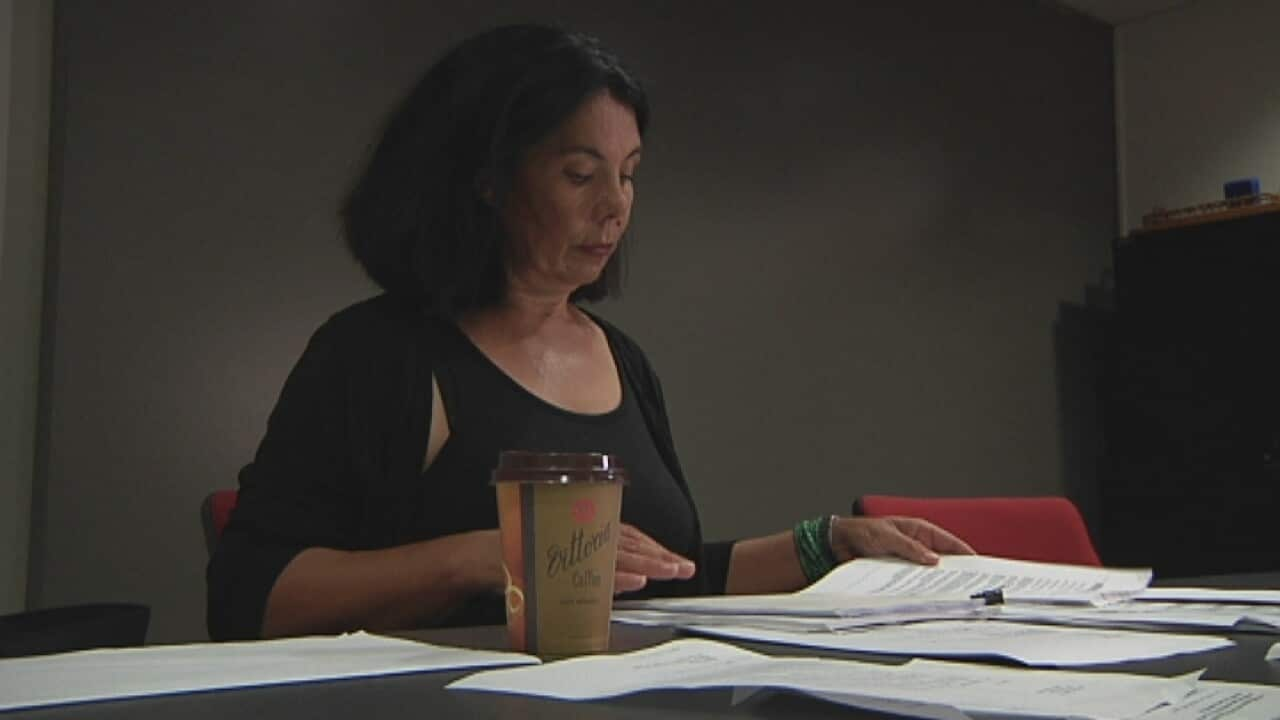Laurinne Campbell, a single mum living in Dubbo in regional New South Wales, was removed from the land council membership roll after the state registrar of land councils, Stephen Wright, failed to find conclusive proof of her Aboriginal ancestry.
In a statement to NITV, Ms Campbell says the ruling sets a dangerous precedent.
“The registrar’s decision leaves any other fair skinned Aboriginal person open to having their Aboriginality determined ‘on the papers’ ignoring the input and cultural knowledge of local Indigenous communities,” she says.
“I continue to believe that I am of Indigenous heritage. I believe this because I have been told this by my parents and broader community since I was a child.”
related reading:

Bronwyn Carlson: Who counts as Aboriginal today?
The registrar’s decision to revoke Ms Campbell’s land council membership followed a six-year-investigation by two members of Dubbo’s Indigenous community, Bernadette Riley and local elder Ray Peckham.
Ms Campbell says the pair was known to her previously.
“The complainants are actively involved in ongoing vexatious and personal attacks on me and are using the platform of Aboriginality and identity as an opportunity to seek a public audience,” she says.
It’s a notion Bernadette Riley rejects.
'It was about the moral of the story'
“It wasn’t driven by spite, it wasn’t driven for any personal gain – it was about a principle and it was about the moral of the story,” she says.
Ms Riley says she met Laurinne Campbell in 2008 while they were both working in the Aboriginal housing sector.
“She was in a position which I thought was an Aboriginal-identified position,” Ms Riley says.
“I asked her if she was Aboriginal, because the previous incumbent of that position was Aboriginal, and she told me that it wasn’t an identified position, that it was a targeted position.
“She also added that they couldn’t find any worthwhile Aboriginal applicants.” Ms Riley says she became suspicious when Ms Campbell accepted a senior identified position with the Aboriginal Housing Office.
Ms Riley says she became suspicious when Ms Campbell accepted a senior identified position with the Aboriginal Housing Office.

Laurinne Campbell is a trained nurse and single mum living in Dubbo, NSW. Source: Facebook
Ms Riley was working for an Aboriginal tenancy service at the time, and had some professional dealings with Ms Campbell.
When Ms Riley questioned Ms Campbell’s appointment to the role, she was informed that Ms Campbell identified as Aboriginal.
She then discovered Ms Campbell, along with some of her family members, had set up the Nigyanni Indigenous Corporation, which claimed more than $100,000 in taxpayer grants in one year, according to the corporation’s income statement in June 2011.
The corporation was voluntarily deregistered in December 2012.
You know as an Aboriginal person, to question somebody, it’s a bridge that you can’t uncross.
Enlisting the help of family friend Uncle Ray Peckham, Ms Riley began investigating Ms Campbell’s heritage.
The Wiradjuri woman says she knew she was crossing a line.
“It's not an easy thing to do, to go out to a community that you're not from and question if somebody's Aboriginal or not - but it was a necessary thing to do,” she says.
“You know as an Aboriginal person, to question somebody, it’s a bridge that you can’t uncross. But we wanted the truth.”
Changing definitions of Aboriginality
Identity is a sensitive issue among Aboriginal people. Governments have redefined who counts as Aboriginal 67 times since European settlement. Now, government agencies assess Aboriginality against three criteria. A person must:
- Be of Aboriginal and Torres Strait Islander descent
- Identify as Indigenous
- Be accepted as such by the community they live in
Laurinne Campbell had her identity confirmed by the Pilliga Local Aboriginal Land Council in 2006.
Her application was initially approved, but Ms Riley says the land council later asked for more evidence. Ms Riley claims this is how she obtained a handwritten copy of Laurinne’s family tree, which she then used to trace her ancestry back nine generations.
Ms Riley says she and Mr Peckham even tracked down Ms Campbell’s so-called family members, who signed statutory declarations pledging to have no knowledge of Laurinne Campbell.
Finally Ms Riley felt she had conclusive proof that Laurinne had no Aboriginal ancestry.
“In my mind, in my heart, in my gut, I don’t recognise her, I do not accept her as an Aboriginal person,” she says.
In 2013, the registrar of New South Wales land councils took action - and after conducting his own genealogy reports - he removed Ms Campbell from the land council membership roll.
Laurinne Campbell claims to have never written the family tree that formed the basis of the investigation.
“The Montgomery family tree… was never relied upon as part of my application for membership of the Pilliga LALC,” she says.
Ms Campbell says her father provided a statutory declaration to the registrar of NSW land councils in 2014, swearing to have had personal contact until he was 28 with his grandmother, who he describes as “without doubt being Indigenous”.










